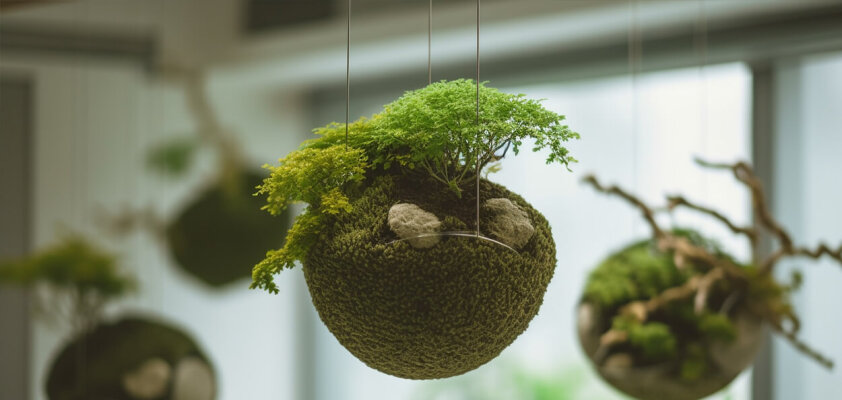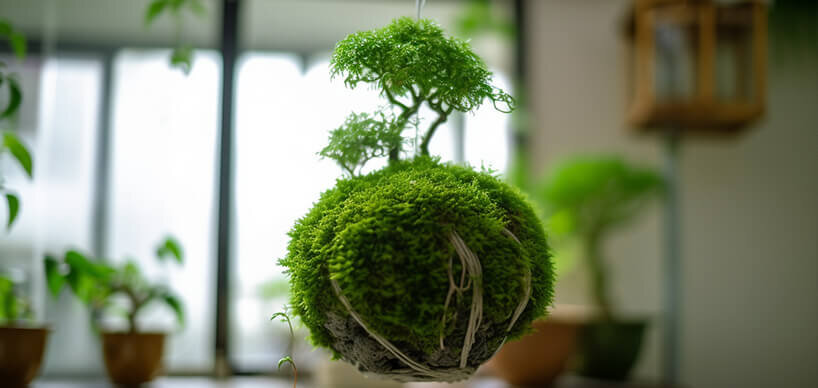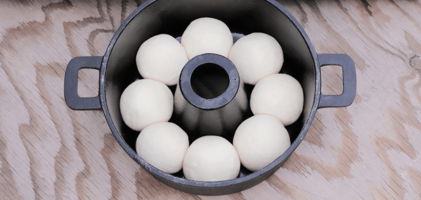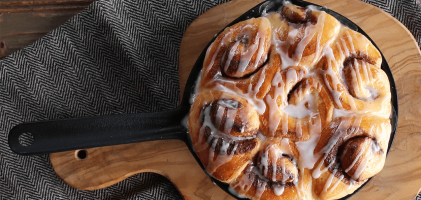Kokedama - Sustainable decoration trend for the home

Inhaltsverzeichnis
What is Kokedama? What do I need to consider when caring for my Kokedama plant? The right location for the Kokedama Kokedama or kibonu as an unusual decorative object Which plant do I use for the cult tree? The spherical plant in the garden - a major trend Do It Yourself instructions for the floating plant from Japan DIY instructionsAs a decorative "lucky tree", the Kokedama is becoming increasingly popular in Germany. But how do you quickly and easily create this plant for your home? Where should the location be for this elegant indoor plant? Is it also suitable for the garden? What do I need to consider in terms of care? The following article answers these and other questions. Here, you will learn how to create a Kokedama yourself and what proper care entails.
What is Kokedama?
The Kokedama (Koketama - 苔玉), or Kibonu, originally comes from Japan and, in German, refers to a moss ball in which an ornamental plant grows and thrives. It is an artistic and vibrant composition featuring ferns, bamboo, and flowering plants. To create a Kokedama, a homogeneous mixture of soil and topsoil must be shaped into a ball. The selected plant is then placed into this finished ball. Subsequently, moss must be secured around the ball with wire. It can be located both indoors and in a garden.
Even today, the plant remains a highly popular form of decoration in Japan. In the past, it was known as the "Bonsai of the poor". Nowadays, the indoor plant is more popular than ever and is often given as a personal gift or as a talisman for growing energy.
What do I need to consider when caring for my Kokedama plant?
Like any other indoor plant, the Kibonu also requires the right care. To properly care for the plant, the moss ball needs to be regularly watered. Due to its small size and the associated limited water storage, the indoor plant needs to be watered regularly, typically once or twice a week.
According to Claudia Neumann from the Kibonu Online Shop, the elegant plant is easy to care for and a time-saving alternative to a bonsai tree. To properly care for the indoor plant, it requires nothing more than regular watering and a bright location without direct sunlight.
Proper care is the be-all and end-all
For optimal care, the Japanese plant is placed on a soup plate filled with water until the moisture is completely absorbed. Depending on the size, this takes 10 to 20 minutes. In addition, it is sprayed with some water in dry air conditions, such as those caused by heaters in winter. Fertilizing is necessary once a month to provide the indoor plant with all the essential nutrients.

An absolute no-go is placing the indoor plant in a bucket of water. Doing so will cause the moss and soil to detach from the ball, destroying the delicate uniqueness of the plant. In addition, the moss ball must be allowed to drain completely before being hung up again.
The right location for the Kokedama
As an indoor plant, it should be placed in a semi-shaded location. The moss ball cannot tolerate direct sunlight as it dries out very quickly in such conditions. For this reason, the plant requires bright locations but should not be hung near a south-facing window. To prevent dirt and stains, the indoor plant is mounted with some distance to walls.
Kokedama or kibonu as an unusual decorative object
The location for the Japanese indoor plant is flexible, and it can be both placed and hung. For creative energy and positivity, it is often arranged as a table decoration. The plant looks especially beautiful in a bowl or on small trays. Another decorating idea is to suspend the indoor plant. For an artistic variant, it can be attached with a transparent ribbon to achieve a floating appearance.
Finding the right location also depends on the plant species. Flowering plants with an upright growth direction look particularly good in pretty bowls. Green indoor plants with trailing leaves, on the other hand, look great when suspended.
Which plant do I use for the cult tree?
In the Japanese version, miniature bonsai trees grow from the moss ball. In Germany, you can also use regional indoor plants such as ivy, ferns, peace lilies, or ornamental grasses. Succulents like aloe or rosette succulents are also very effective. Spring bulb flowers like daffodils and tulips, which also thrive as indoor plants, are very popular as well. Once they have bloomed, the flowers can be planted in the home garden along with the Kokedama.
The spherical plant in the garden - a major trend
The Kokedama is among the currently biggest trends. Many creative gardeners are excited about the idea of creating "floating gardens" with these moss balls. The Japanese plant not only impresses as an indoor plant but enhances any location. Thus, the plant can also be planted in the home garden. In the Western world, floating plants have become well-known, especially through the Dutch florist Fedor van der Valk. He created a string garden inspired by the Japanese original.

For a Kibonu in the garden, bulb flowers and succulents are also suitable. The plant should be hung in a bright and warm place without direct sunlight. In spring, for example, daffodils and hyacinths are the perfect choice. As a real eye-catcher, the floating Kibonu can also be part of a small garden on the balcony.
Do It Yourself instructions for the floating plant from Japan
Below is a step-by-step guide to create your own Kibonu.
You will need: Moisture-loving plants, moss, all-purpose compost for fertilization, soil from a bonsai tree, string, and floral wire.
- Very gently, remove soil residues from the roots of the plant and wrap them with damp moss.
- To create a homogeneous mixture, mix the compost and soil with enough water in a large bowl or bucket.
- The moist mass is now shaped into a ball. The right consistency is achieved when the moss ball does not fall apart when dropped. Excess water is pressed out of the moss ball.
- A depression is pressed into the center of the moss ball to place the plant root wrapped in moss in it. The ball must be firmly pressed together again to prevent it from falling apart.
- The remaining moss is wrapped around the ball and then secured with a string or floral wire. For a firm and secure hold, three strings are wound around the moss ball and knotted. Now your Kibonu can thrive!











-from-the-yakiyaki-grill-pan.jpg)




